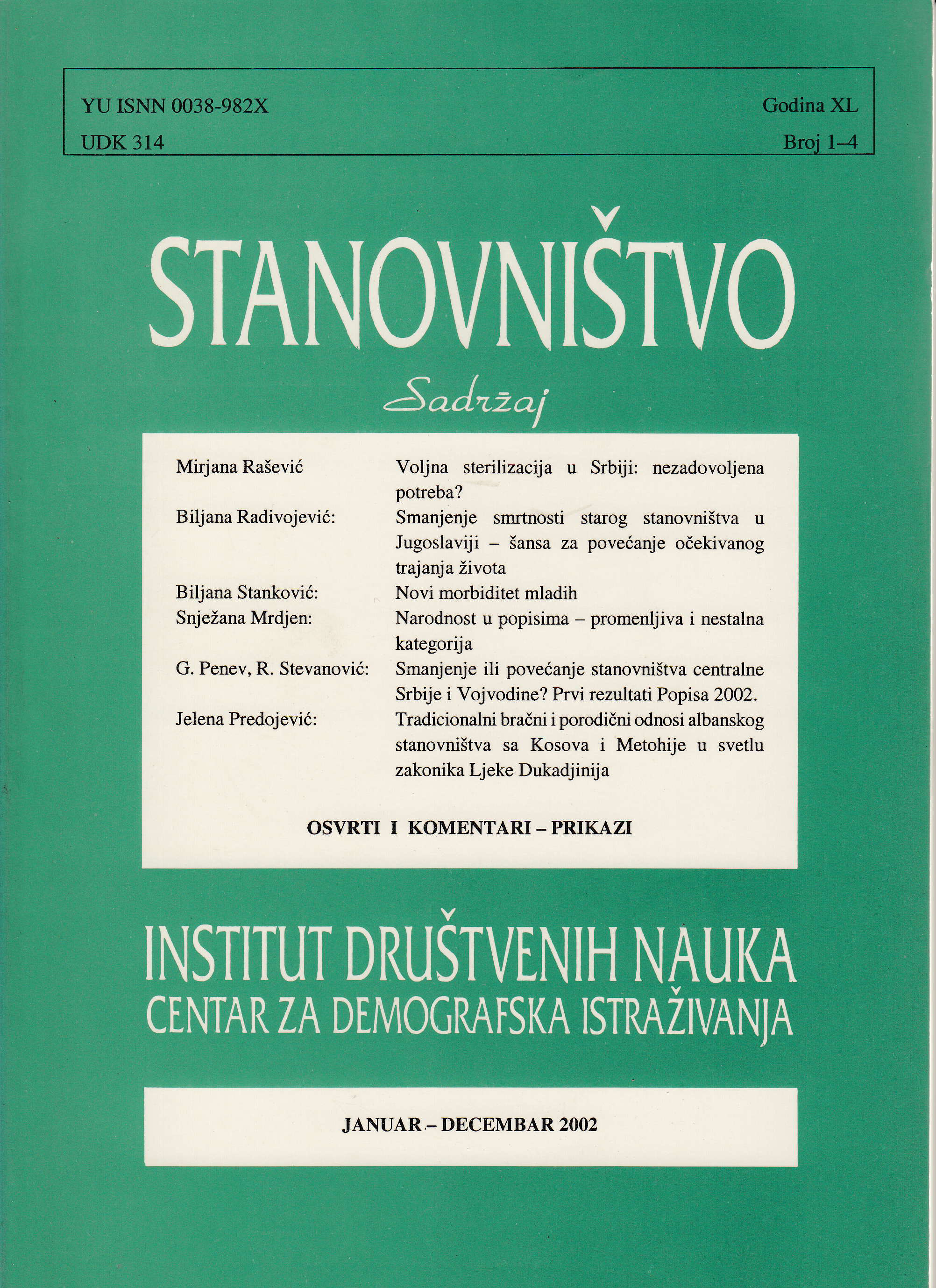Smanjenje smrtnosti starog stanovništva u Jugoslaviji - šansa za povećanje očekivanog trajanja života
Decrease of Old Age Population Mortality in Yugoslavia – Chance to Increase Anticipated Life Expectancy
Author(s): Biljana RadivojevićSubject(s): Demography and human biology, Gerontology
Published by: Институт друштвених наука
Keywords: demographic ageing; old age mortality; anticipated life expectancy; cardiovascular system illnesses
Summary/Abstract: This study analyzes the level and structure of old age population mortality in Yugoslavia with an aim to determine the intensity of realized changes and to provide an answer to how much they are significant and to approach the positive trends noted in developed countries in the latest period. Although it was insufficiently represented in the demographic analysis, the analysis of mortality in old people is gaining importance in the world. Apart from the reasons which result from the increase in the number of old people and thus their greater participation in the total number of deceased, enviable results have been achieved in decreasing old age mortality, which are more and more in focus of interest. While earlier research reported on the dominant influence of the decrease of younger age mortality to the increase of the expectation of life at birth, recent analysis precisely confirm the importance of decreasing mortality in old people.In mortality conditions from 1997/98, an additional 13.4 years of life in average is expected for men in Yugoslavia, and 15.2 for women. During more than five decades, the anticipated life expectancy for people over the age of 65 increased for only 1.2 years for men and 1.9 years for women. Out of that, the greatest increase was realized in the period 1950/51 – 1960/61 in both sexes. A small decrease in the average life expectancy was marked with men in the period 1960/61 – 1970/71, and with women in the latest period. Otherwise, all up to the eighties, the annual rate of increase was considerably lower than the rate of increase for zero year. It was only in the period 1980/81-1990/91 that faster growth had an anticipated life expectancy for the 65 years old. However, during the nineties unfavorable changes continued with the older, especially, female population. When comparing the values of the average life expectancy for people over 65 in Yugoslavia with corresponding values in developed countries, the lagging in average amounted to about 3 years for the male and about 5 years for the female population. In Japan in 1998 it amounted to 17.1 years, namely 22.0 years respectively. However, it is interesting that all up to the seventies these indexes were almost at the same level in our country and Japan, and only after this period the differences appeared as a consequence of putting an end to the positive tendencies in differential mortality by age, even in the increase rate with the older population in Yugoslavia. On the other hand, the anticipated life expectancy for the age of 65 (for both sexes) was increased by 40%, in Japan from 1970 to 1998, in contrast to an increase of 9% for 0 age. In the same period in Yugoslavia, although there was a considerably lower increase percentage, it was still more significant with newborns (above 6% for both sexes), than with population older than 65 (under 5%). Hence, such an inclination and intensity of changes resulted, in relation to Japan, in a relatively greater lagging with people aged 65 than with 0 age.The anticipated life expectancy for people aged 85 and over, in the whole observed period, increased only by 8% with the male population and 10% with the female population of Yugoslavia. Its present level is the result of small changes in the mortality rates of the oldest population. In average, people aged 85 + will live another 4.2, namely 4.4 years respectively under the assumed mortality from 1997/98. At the same time the Japanese men are expected to live another 5.4, and Japanese women another 7.2 years.Therefore, middle aged and old population in Yugoslavia has had unfavorable mortality tendencies in relation to the young population, more distinct beginning from the seventies, and especially with men. The nineties were again unfavorable for the old population, this time especially for the female population, where a slight decrease of this rate was marked. Having in mind the changes and achieved level of anticipated life expectancy in developed countries, it can be said that the deviations in relation to the rates in our country are significant, relatively greater with the older population. For this reason, mortality reduction of the old age population is a chance for an increase in the life span, although all possibilities in our country, for the decrease of mortality with the young as well, especially newborns, have not been exploited. In that sense, it seems that the greatest importance would be control of cardiovascular illnesses and risk factors regarding individual behavior.
Journal: Stanovništvo
- Issue Year: 40/2002
- Issue No: 1-4
- Page Range: 35-52
- Page Count: 18
- Language: Serbian

